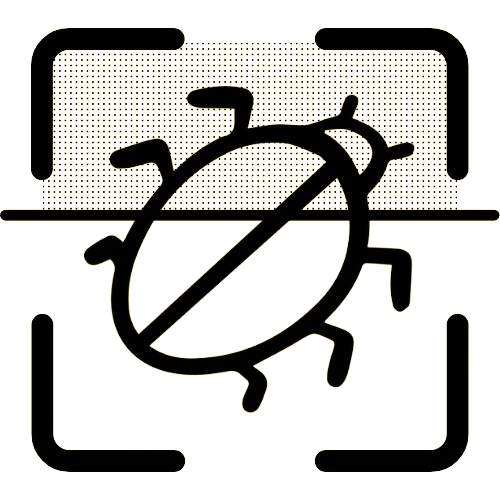Maximizing the Bedbug Scanner: A Guide to Effective Detection and Use
May 27, 2025
The threat of bed bugs is a reality many people face, and effective detection is crucial to managing these pests. Among the various methods available, an AI-powered bed bug scanner offers an innovative solution to reliably address bed bug concerns. In this article, we will explore how a bed bug scanner works, delve into the cutting-edge AI features of Bedbug-Scanner.com, and provide guidance on using this technology for accurate results. Additionally, we will highlight tips on avoiding common pitfalls, share success stories, and offer practical advice on integrating bed bug detection into your routine.
Introduction to Bed Bug Scanning Technology
The emergence of bed bug scanning technology marks a significant advancement in pest control. Traditionally, identifying bed bug infestations required manual inspections by experts—a process that can be both time-consuming and prone to human error. However, with the development of AI-driven tools, bed bug detection has become more efficient and accessible to everyone. The bed bug scanner, utilizing sophisticated algorithms, analyzes images to pinpoint signs of bed bugs, making it a powerful tool in early detection efforts.
Understanding Bedbug-Scanner.com's AI Features
At the heart of Bedbug-Scanner.com is a sophisticated AI system designed to revolutionize bed bug identification. By harnessing the power of AI, the scanner can meticulously differentiate between harmless household nuisances and actual bed bug infestations. The AI image analysis for bedbugs employs machine learning algorithms that refine detection accuracy over time, ensuring you get dependable feedback on your images.
Unlike conventional methods, this advanced technology speeds up the process, providing swift and precise results. Moreover, the tool's user-friendly interface allows seamless navigation, inviting users of all experience levels to engage with cutting-edge technology comfortably.
How to Use the Bedbug Scanner for Accurate Results
Using the bed bug scanner is a straightforward process, designed with ease of use in mind. To obtain accurate results, follow these steps:
-
Capture Quality Images: Ensure good lighting and focus when taking pictures of suspected areas. Blurry or poorly lit photos can lead to inconclusive results.
-
Upload Images to the Scanner: Simply upload the images to the bed bug scanner interface, where the AI will begin analyzing them.
-
Review Results: The AI will process the images, providing feedback on potential bed bug sightings. It classifies findings, highlighting critical areas and offering actionable insights on the next steps.
This process not only simplifies how to check for bed bugs but also enhances detection efficiency, especially when incorporated into a regular inspection routine.
Common Mistakes and How to Avoid Them
Even with top-notch technology, certain common mistakes can lead to suboptimal scanning outcomes. Understanding these pitfalls allows users to optimize scanner effectiveness:
-
Poor Image Quality: As mentioned, lighting and focus critically affect results. Regularly inspect camera quality and correct any issues to boost image accuracy.
-
Ignoring Scan Feedback: Analyzing and responding to AI insights is crucial. Timely action based on scan results can prevent the spread of bed bugs.
-
Infrequent Usage: For ongoing infestations, use the scanner regularly to monitor affected areas closely, discovering new bed bug activity promptly.
By sidestepping these mistakes, users can maximize the tool's efficacy and stay ahead in the battle against bed bugs.
Success Stories: Real-Life Applications
Many homeowners and businesses have already benefited from the bed bug scanner technology. For instance, a hotel chain integrated the scanner into its housekeeping routine, drastically reducing bed bug complaints and saving on pest control expenses. Similarly, a residential user, previously plagued by recurring infestations, utilized the scanner alongside traditional methods for a comprehensive pest management strategy, achieving lasting protection.
These success stories underscore the importance of embracing technological solutions to bolster pest control efforts. Such real-life applications highlight how AI image analysis for bedbugs is transformative in both scope and impact.
Integrating Bed Bug Detection into Your Routine
To effectively protect your home or business from potential infestation, incorporate bed bug detection as a regular practice. This is where early detection strategies prove invaluable, enabling you to act swiftly before minor issues magnify into significant problems. Dedicate a specific day each month to scan vulnerable areas using the bed bug scanner, forming a reliable part of your routine.
Additionally, staying informed through resources such as blog posts and expert articles enhances your ability to maintain a bedbug-free environment. By continuously educating yourself on pest prevention, you'll be better equipped to manage any surprises.
Conclusion
The rise of AI-powered tools like the bed bug scanner is changing the way we approach pest control. By offering a robust, user-friendly, and precise method for bed bug detection, Bedbug-Scanner.com stands out as a leader in the field. As bed bugs continue to challenge households and businesses alike, reliable detection tools are indispensable in enabling timely action and minimizing discomfort.
We invite you to experience the cutting-edge innovation of Bedbug-Scanner.com. Whether you've faced infestations before or are simply taking preventative steps, this tool provides the peace of mind you deserve. Leverage the power of technology in your battle against bed bugs, and take a proactive approach to pest management today.
